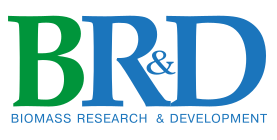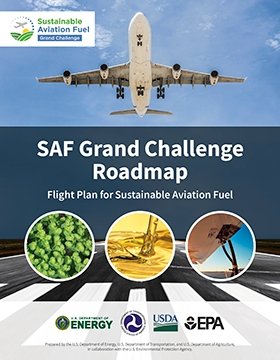
The Feedstock Innovation Action Area lays out R&D workstreams facilitating sustainable feedstock supply system innovations across the range of sustainable aviation fuel (SAF)-relevant feedstocks, as well as enabling supply chain optimization to reduce cost, technology uncertainty, and risk; increasing yield and sustainability; and optimizing SAF precursors (e.g., ethanol and isobutanol). Using an evolving approach, feedstock supply systems will be developed to interface with existing or emerging conversion technologies to enable SAF production to meet near-term (2030) and longer-term (2050) U.S. SAF production targets. The Feedstock Innovation Action Area overlaps with other action areas in the roadmap, including Conversion Technology Innovation, Building Supply Chains, and Policy and Valuation Analysis.
Key Actions and Workstreams Supporting SAF Feedstock Innovation
Download the full version of the SAF Grand Challenge Roadmap: Flight Plan for Sustainable Aviation Fuel. |
- Understand resource markets and availability to foster an understanding of supply and demand dynamics for feedstocks under the proposed production levels for SAF and develop common and accessible databases for SAF feedstock.
- Maximize sustainable lipid supply for 2030 through a coordinated approach to lipid feedstock research, development, demonstration and deployment.
- Increase production of purpose-grown biomass resources and collection of wastes and residues by enabling innovations that will lead to the development of technologies and strategies that will increase the availability of biomass and waste resources for use as sustainable aviation fuel feedstocks at reduced carbon intensity, inputs, and cost.
- Improve feedstock supply logistics with R&D to support the development of collection and harvesting systems, including transportation, storage, and preprocessing to increase efficiencies and decrease cost and carbon intensity.
- Increase reliability of feedstock handling systems through understanding how feedstock composition, structure, and behavior impact system performance.
- Improve sustainability of biomass and waste supply systems through understanding how biomass production and waste collection for use as a sustainable aviation fuel feedstock impacts air, water, soil, biodiversity.
2030 Feedstock Innovation Impact Highlight
Maximize Sustainable Lipid Supply
Increasing the supply of sustainable lipid feedstocks to support near-term SAF production has been identified as a critical need. As an element of a coordinated approach to lipid feedstock research, development, demonstration and deployment, the U.S. Department of Agriculture will work with U.S. farmers to develop and improve sustainable oilseed supply through expanded R&D and pilot trials for emerging oilseed cover crops. Expanding cover crops with low land-use-change impact will be vital to support the 2030 SAF production goal of 3 billion gallons per year.

